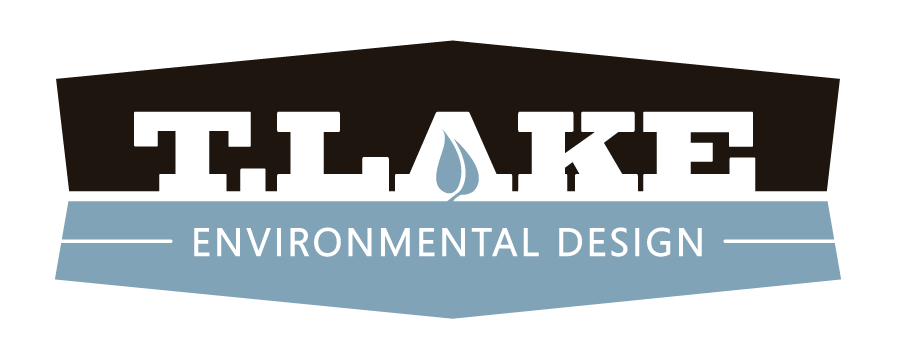Want to know a simple way to improve patient outcome, reduce staff stress and boost consumer satisfaction for your medical facility? Consider adding landscape features.
It’s true. Studies repeatedly show that gardens, plants and trees have a healing and stress-reducing effect that can significantly improve human experience and outcome in a medical setting. The economic advantages to the health care provider are many, ranging from lowered absenteeism and staff turnover to lowered cost of patient care.
What factors should you consider when planning medical campus landscape amenities? There’s a lot to think about, but here are a few places to start:
Who Will Be Using Your Medical Landscape Areas?
When planning any design project, it’s important to keep the end user - or users - in mind. In the case of a medical campus, we’ll need to consider a number of distinct user profiles:
- Patients - The concept of healing gardens is centuries old. Studies show that simply viewing living plants has a healing effect. There are many ways to incorporate the healing power of plants into your medical campus. But you should also consider the needs of your facility’s other occupants:
- Employees and staff - Medical workplaces can be highly stressful. Making landscape amenities accessible to employees can help improve the working environment.
- Visitors - Families and visitors are also subject to worry and stress and often must while away many hours at the facility.
- Children - Whether patients or visitors, children have special needs that landscape elements can help to meet. Children need to exercise their bodies and minds. People tend to want to corral them into tiny play areas. That can work, but if you have the room why not include an expanse of lawn where they can safely run their energy off? Including objects that they can stack and build with also helps stimulate their minds and bodies and allows them to burn off energy.

For all these people, landscape amenities offer the opportunity to get outside of the hospital room and other stressful spaces, to enjoy peaceful quiet and positive stimuli. It’s important to consider the special needs of each group in order to construct landscape areas that are safe and effective for everyone.
Walkways: Encouraging Healthy Movement
Whether it’s a physician on break, family members, or a patient in ambulatory therapy, nearly everyone on a medical campus appreciates an area to stroll. Walking areas and paths are therefore highly desirable additions to the medical campus landscape.
On a larger campus, you can design certain areas of your landscape to meet the needs of different users. Consider what type of durable surface will work best for the each. For example, the ideal pathway for a recovering patient needs to be easily walkable, safe, and slip proof. Walkways should be wide and level enough for safe wheelchair access. A young, healthy staff member might appreciate a winding trail punctuated with exercise stations.
Keep in mind that meandering walkways are much more calming to people than straight line pathways. Consider, too, that a meandering pathway doesn’t have to have a uniform width. Varying the width of the walkway creates a naturalistic effect that many find calming and attractive.
Places To Sit: Inviting Rest And Contemplation
Comfortable places to sit are an essential element for a medical center landscape. Not only do they provide resting spots for patients and weary visitors, but they can also encourage positive social interaction. Provide a variety of benches, chairs, picnic tables and other resting spots. It’s nice to include seating arranged to facilitate conversation as well as secluded spots for private contemplation.
It can be tempting to go wild with hardscape elements when planning your seating areas, but use restraint: studies indicate that too much concrete may actually counteract a landscape’s healing effect. Instead, use hardscape to support the real stars of the show: your plants, trees, and water elements.
Water Features For Your Medical Facility
 There are so many ways to enhance your medical facility landscape with water. Outdoor water features are beautiful and popular and can range from the still water of a pond to a bubbling fountain or stream.
There are so many ways to enhance your medical facility landscape with water. Outdoor water features are beautiful and popular and can range from the still water of a pond to a bubbling fountain or stream.
If you can, try to design your facility so that the water can be seen from inside. Waiting areas, patient rooms, and staff break areas all benefit from views over water or perhaps a large fountain that can be seen from the distance.
In addition to large ponds and fountains, you can also include small scale water features within your landscape. Small fountains, waterfalls and streams with footbridges invite people to contemplate nature and can have a calming effect.
Keep in mind the different effects that different water features can have on the human psyche. Slow moving and softly bubbling water is calming. Rushing water is exciting. While it may not be appropriate for seriously ill patients, faster moving water can be an invigorating addition to an employee break area.
Sun And Shade
When designing your medical campus, include areas of sun and shade. In the Southeast we always need to consider shade for any outdoor area. In addition to trees, there are many attractive ways to provide shade, including shade sails, arbors, and gazebos.
Lighting
Most medical campuses are constantly in use, with people up and working 24/7. Architectural landscape lighting can be used very artistically for wonderful effects you don’t see during the day. Moonlighting of walkways, uplighting of trees and sculptures, and other lighting techniques all can be used to create a calming, healing nighttime environment. Artistic lighting adds a little magic to the landscape and can even give your medical facility a resort-like feel when done by a qualified practitioner.
Of course, proper lighting is also very important to maintain adequate safety on your medical campus.
Bringing Nature Inside
Bringing the landscape inside in is a wonderful thing. Indoor gardens are more common in the North but there’s no reason we can’t have them in the Southeast, too. I did a cancer treatment center years ago in FL where we created a viewing garden for chemo patients, so those folks going through a terrible time could have something beautiful to view.

A few colorful tropical plants and perhaps a small water feature can transform a depressing corner or lobby into an oasis. Indoor landscaping also works to enhance indoor air quality. Just bear in mind the maintenance considerations and logistics of servicing an indoor landscape before you commit to installing one.
Medical Facility Landscape Design for Georgia and the Southeast
Would you like to know more about enhancing your medical campus with landscape design? Give us a call at 478-750-7733 (Macon branch) or 478-272-3878 (East Dublin location), or contact us online for more information.


